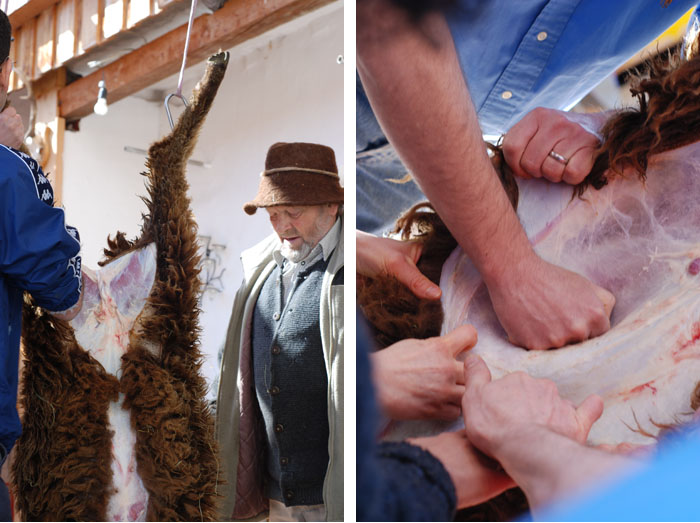In Appreciation of a Sheep
Many of us grew up and live in cities where our meat is packed in cling wrap, displayed orderly on the chilled supermarket aisle or where they are butchered into recognisable parts which we just point to the butcher the portions that appeal to us. There are also some of us who don’t feel comfortable handling uncooked meat – whether they are assigned to a vegetarian home cooking life or not, the problem can be solved by just not being the one that prepares the meat.
Let me share with you a unique and rare experience of mine where I not only witnessed the journey of a live animal from its sacrilege to its end on the dining table for a roast. More than a year ago, I was staying with a Bavarian family in their farm. They were the hosts for the 2 week course I attended – the course that kicked start my dive into Rolfing. As part of the curriculum, we were given an opportunity to have a look at the architecture and insides of a sheep, also to have a tactile feel of the body’s connective tissue – what we Rolfers work with.
Because exposure to oxygen and the cessation of life rapidly diminished the qualities of connective tissue, we began immediately to take the sheep apart, first by tearing off its skin. Slightly squirmy and disgusted, many of us were at first hesitant to volunteer our hands. For me, curiosity took over. After a slight hesitation, I slid my hands underneath the skin and began to separate skin and flesh. The sheep felt warm still and the body was both soft and liquid, making it easy to slide the hands around. As the minutes ticked by, the chills of winter and the end of life quickly turned the body dry and stiff.
Firstly, it is not easy to bring apart the sheep. Armed with a sharp knife, the farmer was both daft and skilled. We stood back and let him do his thing. After removing its skin, we moved on to emptying its viscera and also its organs. Glistening kidneys, endless rolls of intestines, the two lobes lungs and the once-pumping heart, they all were built to beautiful perfection. And I began to appreciate too that this is what we are made of inside…
Later in the evening when we were out for class, a few of us revisited the sheep. A small stream of neighbors came by with their containers to collect their favourite cuts. By now the meat had turned from a light, fleshy pink to a deeper red, a colour closer to the red meat we purchase from the butcher.
The lady of the house, who prepares meals which I still think are the best I’ve had in Germany, made a roast lunch for us the next day. A couple of fellow coursemates gave the meat a miss as they did not feel appropriate and comfortable to eat what they dissected or butchered the day before. To my surprise, such apprehension was not present in me. Instead I was rather excited to complete this special process.
As I bite into each morsel of meat, I was not only enjoying its delicious juices. I didn’t rush to eat. Each bite was an appreciation of the life of the sheep that grew with the grass from the land just out the door in the mountainous surroundings of the Bavarian countryside. And these were the bites I was savouring.
- 16 November 2008
- germany
- No comments
- #



